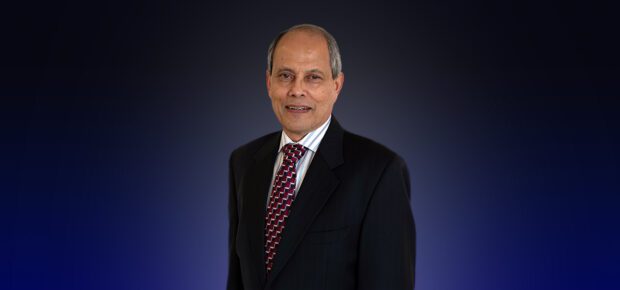September 25, 2025
For much of the developing world, electrification represents a complex conundrum. As industrialization and development improve consumer buying power, the demand for electricity rises. Governments can obtain loans to build power plants because when a plant generates electricity, it can be sold for a profit, and the loans repaid.
However, the same cannot be said for the construction of transmission lines, which carry electricity but don’t produce it. Foreign loans are rarely available to build transmission capacity. As a result, governments or local utilities struggle to find the funds to build transmission capacity.
That’s the situation Bangladesh finds itself in, according to 2023 IEEE President Saifur Rahman, an expert in power systems. He was born in Bangladesh, completed his Ph.D in nuclear power plant operations, and continues to research renewable energy, including the integration of electric and wind power into energy grids.
“Bangladesh’s experience is not unique in the world,” Rahman said.
Here, Rahman discusses how developing countries can improve access to renewable energy while also improving access to electricity in rural areas.
How does renewable energy, like wind and solar, fit into rural development in countries like Bangladesh? What challenges does renewable energy face?
Solar and other renewables like wind are cost-competitive now compared to coal, but these are not available 24/7, especially in tropical countries like Bangladesh with long monsoon seasons. Solar energy is a distributed resource. The panels can be located close to where people live, which means these systems don’t need long power lines back to a central station. For this same reason, it’s difficult to supply back-up power when solar is not available.
Battery back-up is a solution, but it can cost as much as the solar plant itself.
By upgrading their transmission and distribution infrastructure, developing countries can avoid frequent outages and voltage fluctuations. But this requires a serious injection of capital, which may be difficult to get. It’s been a contentious issue and is a matter of serious discussion at the UN’s Conference of the Parties (COP). Industrialized countries have made commitments worth hundreds of billions of dollars to help. These funds could also promote solar access.
How can they get the economics right? In a situation of overcapacity, solar installation might make some viable sources obsolete.
In countries like Bangladesh, where available generation cannot serve the unmet load due to inadequate transmission and distribution infrastructure, a two-pronged approach may be followed. Number one, provide solar power for meeting mainly domestic and commercial needs with some local battery and diesel back-up in areas away from main population centers. Number two, build and strengthen transmission and distribution infrastructures to serve major industries and large cities. In this way, they can serve unmet loads in remote areas and keep using legacy power plants, and build new ones as needed.
Some developing nations feature master plans for energy development that include extremely ambitious initiatives, like hydrogen fuel hubs. How important is it for countries to set realistic short- and mid-term targets in their energy plans?
To support the needs of their populations, developing nations would be better off taking a phased approach. Start by purchasing power from neighboring countries in the short term, where it’s available, and deploy small-scale, dispersed solar in large volumes.
Emerging technologies like smart grids, battery storage, and microgrids are often touted as ways for developing countries to leapfrog traditional infrastructure. In your view, what role can these innovations play in integrating solar energy into fragile grids?
Since many developing countries do not have a functioning country-wide transmission grid like those in the industrialized world, local solutions using microgrids and battery storage can address the gap. However, these solutions cannot take advantage of economies of scale and require skilled manpower in remote locations, which is not always easy to obtain.
Energy efficiency measures that reduce electrical demand during peak hours and shift it to off-peak hours through time-of-use pricing are a more cost-effective solution.
As someone who has engaged with global initiatives, what broader benefits do you foresee from the successful integration of solar power in the developing world?
In most developing countries, there is a wide gap in the availability of electricity between urban and rural communities, which affects education, public health, and economic opportunities in disadvantaged communities. The availability of small-scale solar power can help to bridge this gap in many countries in Asia and Africa, but this requires strong financial and policy support from the government, including plans for manpower training.
What message would you give to global technology enthusiasts about supporting these efforts to ensure that the clean energy transition uplifts humanity as a whole?
For technology enthusiasts, my message is: be innovative, use appropriate technologies where locally available manpower can be quickly trained, and ensure local ownership.
ABOUT OUR AUTHOR
Saifur Rahman is the 2023 IEEE President and CEO, an IEEE Life Fellow, and the founding director of the Advanced Research Institute at Virginia Tech, where he is a professor of electrical engineering. Over the years, he has served IEEE in a number of capacities, including as president of the IEEE Power and Energy Society, and as the founding editor of IEEE Electrification Magazine and IEEE Transactions on Sustainable Energy.





 Meaningful Momentum or Running in Place?
Meaningful Momentum or Running in Place? AI Through Our Ages
AI Through Our Ages Liquid Infrastructure: Our Planet's Most Precious Resource
Liquid Infrastructure: Our Planet's Most Precious Resource The Impact of Technology in 2025
The Impact of Technology in 2025 Quantum and AI: Safeguards or Threats to Cybersecurity?
Quantum and AI: Safeguards or Threats to Cybersecurity? Why AI Can't Live Without Us
Why AI Can't Live Without Us Bits, Bytes, Buildings and Bridges: Digital-Driven Infrastructure
Bits, Bytes, Buildings and Bridges: Digital-Driven Infrastructure Impact of Technology in 2024
Impact of Technology in 2024 Emerging AI Cybersecurity Challenges and Solutions
Emerging AI Cybersecurity Challenges and Solutions The Skies are Unlimited
The Skies are Unlimited Smart Cities 2030: How Tech is Reshaping Urbanscapes
Smart Cities 2030: How Tech is Reshaping Urbanscapes Impact of Technology 2023
Impact of Technology 2023 Cybersecurity for Life-Changing Innovations
Cybersecurity for Life-Changing Innovations Smarter Wearables Healthier Life
Smarter Wearables Healthier Life Infrastructure In Motion
Infrastructure In Motion The Impact of Tech in 2022 and Beyond
The Impact of Tech in 2022 and Beyond Cybersecurity, Technology and Protecting Our World
Cybersecurity, Technology and Protecting Our World How Technology Helps us Understand Our Health and Wellness
How Technology Helps us Understand Our Health and Wellness The Resilience of Humanity
The Resilience of Humanity Harnessing and Sustaining our Natural Resources
Harnessing and Sustaining our Natural Resources Creating Healthy Spaces Through Technology
Creating Healthy Spaces Through Technology Exceptional Infrastructure Challenges, Technology and Humanity
Exceptional Infrastructure Challenges, Technology and Humanity The Global Impact of IEEE's 802 Standards
The Global Impact of IEEE's 802 Standards Scenes of our Cyber Lives: The Security Threats and Technology Solutions Protecting Us
Scenes of our Cyber Lives: The Security Threats and Technology Solutions Protecting Us How Millennial Parents are Embracing Health and Wellness Technologies for Their Generation Alpha Kids
How Millennial Parents are Embracing Health and Wellness Technologies for Their Generation Alpha Kids Space Exploration, Technology and Our Lives
Space Exploration, Technology and Our Lives Global Innovation and the Environment
Global Innovation and the Environment How Technology, Privacy and Security are Changing Each Other (And Us)
How Technology, Privacy and Security are Changing Each Other (And Us) Find us in booth 31506, LVCC South Hall 3 and experience the Technology Moon Walk
Find us in booth 31506, LVCC South Hall 3 and experience the Technology Moon Walk Virtual and Mixed Reality
Virtual and Mixed Reality How Robots are Improving our Health
How Robots are Improving our Health IEEE Experts and the Robots They are Teaching
IEEE Experts and the Robots They are Teaching See how millennial parents around the world see AI impacting the lives of their tech-infused offspring
See how millennial parents around the world see AI impacting the lives of their tech-infused offspring Take the journey from farm to table and learn how IoT will help us reach the rising demand for food production
Take the journey from farm to table and learn how IoT will help us reach the rising demand for food production Watch technical experts discuss the latest cyber threats
Watch technical experts discuss the latest cyber threats Explore how researchers, teachers, explorers, healthcare and medical professionals use immersive technologies
Explore how researchers, teachers, explorers, healthcare and medical professionals use immersive technologies Follow the timeline to see how Generation AI will be impacted by technology
Follow the timeline to see how Generation AI will be impacted by technology Learn how your IoT data can be used by experiencing a day in a connected life
Learn how your IoT data can be used by experiencing a day in a connected life Listen to technical experts discuss the biggest security threats today
Listen to technical experts discuss the biggest security threats today See how tech has influenced and evolved with the Games
See how tech has influenced and evolved with the Games Enter our virtual home to explore the IoT (Internet of Things) technologies
Enter our virtual home to explore the IoT (Internet of Things) technologies Explore an interactive map showcasing exciting innovations in robotics
Explore an interactive map showcasing exciting innovations in robotics Interactively explore A.I. in recent Hollywood movies
Interactively explore A.I. in recent Hollywood movies Get immersed in technologies that will improve patients' lives
Get immersed in technologies that will improve patients' lives